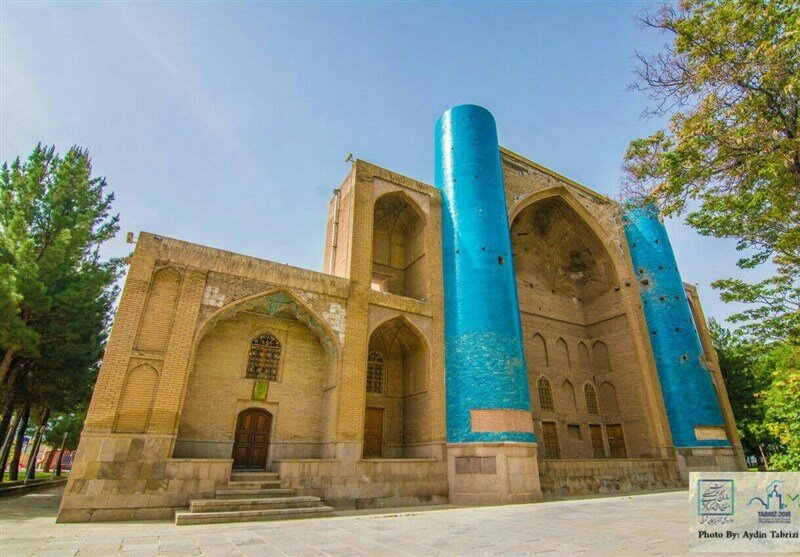Work begins to demarcate Sheikh Shahab al-Din Ahari ensemble

TEHRAN – A team of archaeologists and cultural heritage experts have launched a demarcation project to propose legal boundaries of Sheikh Shahab al-Din Ahari ensemble, which is located near Ahar, East Azarbaijan province.
“Following rounds of field research and initial studies, 20 trenches have so far been dug to help experts propose and determine legal boundaries of Sheikh Shahab al-Din Ahari ensemble,” Mehdi Kazempour, who leads the project, said on Monday, ILNA reported.
Named after the seventh and eighth-century mystic and poet, the complex includes a mosque, a Khanqah and mausoleum, and a few pavilions originally date back to the late Ilkhanid era (1256–1353).
The mausoleum was built on the poet’s grave long after his death. In existing sources, the construction of the mausoleum is attributed to the Safavid monarch Shah Abbas I, and the construction of the raw brick enclosure around it to Amir-Taymur Gurkan, according to Visit Iran.
The building was restored near the end of the twelfth century by Mostafa Qoil Khan, the governor of the region. The author of Asar-e-Bastani-e Azarbaijan introduced Sheikh Shahab al-Din Ahari as a descendant of Sheikh Shahab al-Din Sohrevardi, whose ancestry traces back to Abu Bakr.
The main iwan of the mausoleum is flanked by a pair of massive minarets not taller than the iwan itself. It is possible that the construction of the minarets was left unfinished, or that their top ends were demolished at a later date. The mosque is located east of the mausoleum and is decorated with stucco work and paintings and all the walls are covered with handwriting.
Soaked in history and culture for millennia, Tabriz, which is the capital of East Azarbaijan, embraces several historical and religious sites, including the Jameh Mosque of Tabriz and Arg of Tabriz, and UNESCO-registered Tabriz Historic Bazaar Complex to name a few. The city became the capital of the Mongol Il-Khan Mahmud Gazan (1295–1304) and his successor. Timur (Tamerlane), a Turkic conqueror, took it in 1392. Some decades later the Kara Koyunlu Turkmen made it their capital, it was when the famous Blue Mosque was built in Tabriz.
Tabriz retained its administrative status under the Safavid dynasty until 1548 when Shah Tahmasp I relocated his capital westward to Qazvin. During the next two centuries, Tabriz changed hands several times between Persia and Ottoman Empire. During World War I, the city was temporarily occupied by Turkish and then Soviet troops.
AFM

Leave a Comment